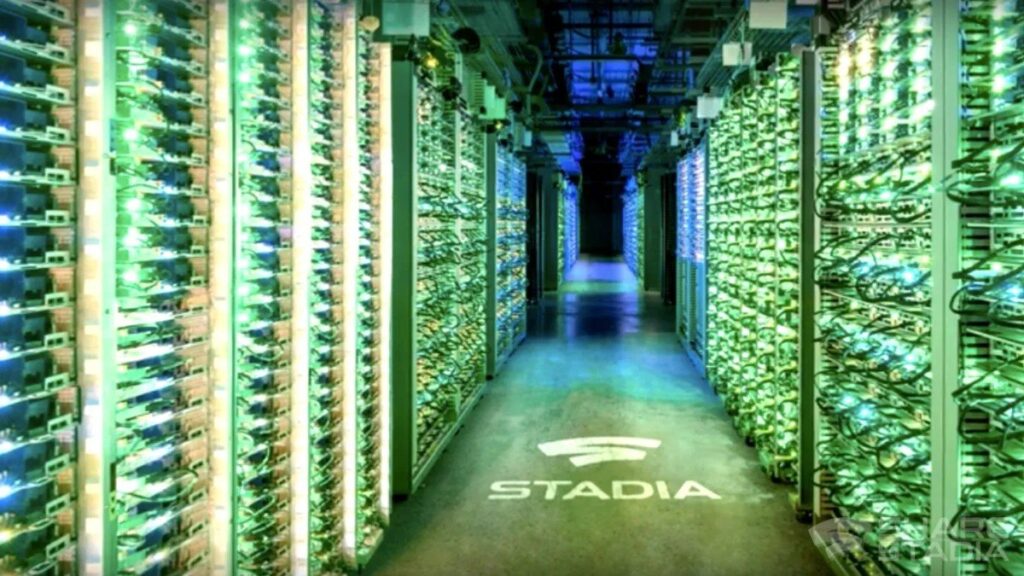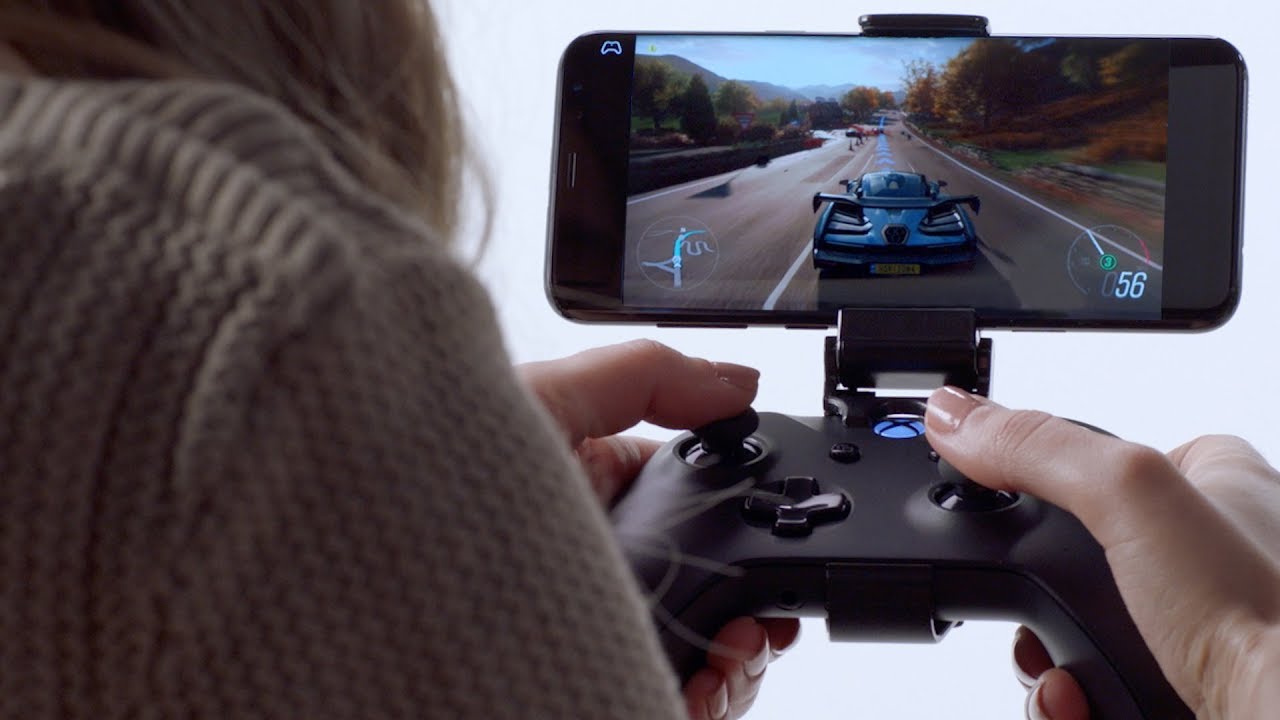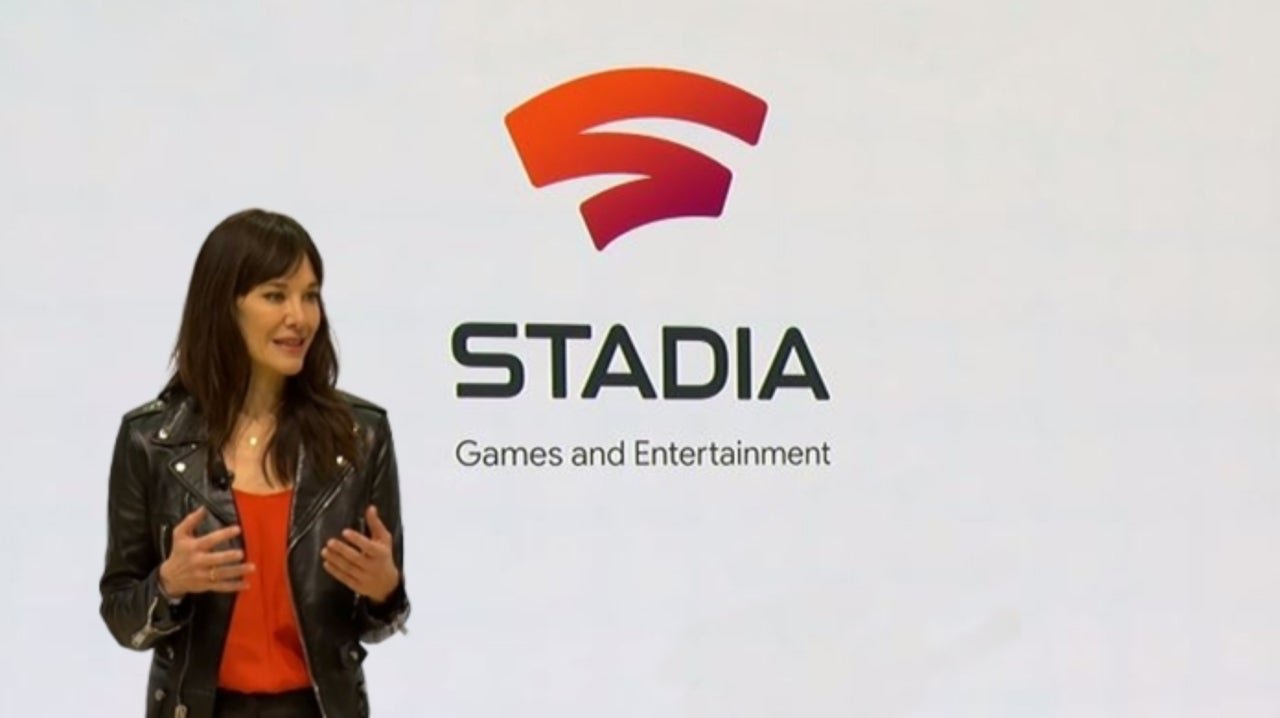
The cloud has been an integral piece of the technology world for a number of years now. It’s how we have Google Drive, Dropbox, OneDrive, and iCloud at our fingertips on most of our devices. But cloud gaming didn’t seem to take hold of the public interest until far more recently. PlayStation Now has been around since 2014 and has the biggest subscriber base at 1 million subscribers (as of October 2019). There are quite a few big tech companies vying for a slice of the cloud gaming pie, but it’s hard to say how sustainable these initiatives will be in a country that has such disparate internet networks scattered throughout the landscape.
We’ve been diligently covering cloud gaming at GameDaily since our beginning, highlighting cloud gaming as one of the biggest stories to watch unfold in 2019. (I mean, we were right.)
Tech demos are rarely a good way to show off the power of streaming, especially if they’re in controlled environments like at events. All it does is show off what might be possible if conditions were as close to optimal as they can be. But EA’s CTO, Ken Moss, insisted that it was an early demo and that EA wasn’t disclosing when they’d be bringing the service to market. We’d originally surmised that EA would loop the streaming service in with EA Origin Access Premier later that year.
The second technical test for EA’s cloud gaming service, Project Atlas, was held earlier this fall in September. If EA is still full steam ahead with Atlas, we’ll likely see another update before the end of the fiscal year.
I had a chance to sit down and demo Blade’s Shadow cloud gaming service last year, in addition to talking with Blade CEO, Asher Kagan. Kagan has been a firm voice in the argument against embracing the Netflix model of gaming, instead focusing on the importance of being able to play the games that you already own.
“What we felt is that gaming is super cool now but you have lots of friction to actually access the games, the content,” Kagan told us in 2018. “The content is the key in gaming. You’re buying a game for $60. You can spend hundreds of hours on this game. And so it’s very cheap entertainment. But to be able to access this game you need to put together $1,000, $2,000 to buy the machine, to access the content. The content is the king, but you’re still limited.”
I’m pleased to say that the service continues to improve and evolve, even though it was pretty stellar right out of the gate. (Latency was a real beast at the time, though, but it’s improved as the service has expanded.) Since then, Blade has released the Shadow Ghost, which sits next to my mantle as a tiny little PC that I can play sitting on my couch. Blade has also secured a fair amount of additional investment, as well as a partnership with Charter Communications.
Microsoft has been investing in cloud services for well over a decade at this point, especially with Azure and Sharepoint, but it hadn’t quite tipped over to gaming yet. “Gaming For Everyone” has trickled down through the ranks since bossman Phil Spencer took over in March 2014.

In July 2018, we’d started to hear rumors that the new Xbox console generation would have a version of it dedicated to streaming and digital purchases only. Of course, this ended up culminating in the Xbox One S All-Digital Edition, which was announced on April 16, 2019. Project Scarlett was still about a year away from official announcement at that point, so we had to make do with what little information we had.
Fortunately, in October 2018, Microsoft came out and announced Project xCloud, its cloud gaming initiative. At the time, we spoke to IHS Markit, and they affirmed that xCloud would be a “multi-year journey which will be supported by the build out and availability of next-generation fixed and mobile networks including 5G.”
In the same week that Microsoft announced Project xStream, Google rolled out Project Stream to get players to test out Assassin’s Creed Odyssey in the browser. It was an overwhelmingly positive reaction from players, among piqued interest from industry analysts.
“This flurry of activity reveals an industry accelerating towards a cloud gaming future driven by a desire to maintain or expand their position in the AAA games market that could be increasingly unhinged from specialist console and PC hardware,” IHS Markit told us in 2018.
IHS Markit released a couple of reports in 2019 that touched on a couple of key points for the industry, including revenue from the prior year and the projected revenue by 2023. According to IHS Markit’s report from March 2019, cloud services brought in $234 million in revenue in 2018.
“Cloud service providers already offer cloud-based tools to game developers,” analyst Piers Harding-Rolls said in the report. “Being active in cloud gaming allows cloud service providers to synergize their infrastructure investments with their consumer facing content and services. As the momentum builds behind a revitalized cloud gaming market, cloud service providers recognize the disruptive potential of the technology and their cloud infrastructure competitive advantage.”
Their second report, which was much more forward-looking, came out in May 2019, and projected that cloud services would earn $2.5 billion in revenue by 2023. Although cloud gaming is still only 2% of the current global games business, the analyst firm was clearly seeing the long-term potential in the market.
“While Sony is the leading operator in the market, it has taken a very measured approach to rolling out the service and has only become more aggressive on user acquisition in the last 12 months,” Harding-Rolls noted. “The service remains centred on catalogue content. Both factors mean it remains a relatively small opportunity for the company, although it has built deep expertise in cloud gaming as a result.”
Niko Partners projects that cloud gaming in Asia will hit $3 billion. While that might contrast with IHS Markit’s numbers a bit, it’s not unreasonable that Asia will lead the charge with cloud gaming. Most of its gaming population relies on mobile for its gaming needs, after all.
“Consoles are a niche market in Asia outside Japan, and we expect this to remain the case moving into the next generation,” Niko Partners senior analyst Daniel Ahmad told GameDaily. “We believe that cloud gaming can expand the console playing audience by bringing high quality console games to PC and mobile gamers via cloud. Microsoft has already partnered with SK Telecom to trial its XCloud console cloud game service to over 1 million 5G users on the network.”
Shortly before Google had its big announcement during GDC 2019 (we didn’t know what it was at the time, but it was Stadia), the tech behemoth announced that Jade Raymond would be joining Google as a vice president. Since then, Raymond has been confirmed to be head of first-party services for Google Stadia.
When Google announced Stadia earlier this year during GDC, there were a lot more questions than answers. Phil Harrison, former president at Sony’s Worldwide Studios and head of European Studios at Xbox Game Studio, joined the Stadia team and became the frontman fairly quickly.
The big questions that we posited shortly after Stadia’s announcement were around structure and pricing, in addition to YouTube integration (for little ones using Stadia), and whether or not we can trust Google to actual stick it out.
Shortly before E3 2019, Google released a few more details for Stadia, including pricing and how the “founders edition” would be structured. We noted that there were still a number of unanswered questions that Google didn’t seem keen on talking about.
In stark contrast with the previous year, E3 2019 had a number of cloud-related announcements that we only partly saw coming. In internal conversations, we figured that Microsoft had to be announcing Project Scarlett officially (and they did) in addition to new information about Project xCloud.
They didn’t give us much about xCloud during E3, but it was something that propelled us towards the extended “preview” that Microsoft is in the midst of conducting.
Bethesda tossed its oddly-shaped hat into the cloud gaming ring with its new tool, Orion, during its E3 2019 presentation.
“Orion is a tremendous breakthrough in streaming technology,” Altman said during the presentation, noting that Orion is meant to augment rather than compete with other cloud services. “It is our name for a group of patented technologies that optimize game engines for performance in a cloud environment. Orion can work with any game engine and will improve experiences no matter which game you’re playing or whether you’re streaming on Stadia, on xCloud, or another streaming platform.”
And finally, Stadia’s Phil Harrison confirmed to Geoff Keighley in the E3 Coliseum that the subscription options for Stadia wouldn’t be what we thought it was going to be. In the interview with Harrison, Keighley likened it to paying for HBO on top of a cable service. We’ve since learned, of course, that games will be full-price on Stadia in addition to the $9.99 monthly cost.
During its Made By Google event, the company announced that Stadia will launch on November 19, but that date only applies to those who pre-ordered the Founder’s Edition. Everyone else will need to wait. It was a lackluster 45-second announcement during Google’s flagship tech show.
Shortly after Stadia’s official launch date was revealed, head of first-party, Jade Raymond, announced a new Montreal studio to support Stadia’s first-party games.

Raymond’s new studio is being built to help Stadia on its mission to “produce exclusive, original content across a diverse portfolio of games in all your favorite genres.”
Google had announced earlier in the year that the content it would be intending to pursue would be from a wide array of studios. There had been a wide range of companies among the 4,000+ applications, from AAA studio to small indies, and Google is “interested in building a portfolio of exclusive and non-exclusive titles on Stadia,” from big and small studios alike.
But with only 22 titles (10 of which were added in the days up to the launch) at the outset, Stadia has yet to make good on its desired outcome of a diverse portfolio.
Additionally, the features that were supposed to ship with Stadia at launch, including Family Sharing, Stream Connect, Stat Share, and Crowd Play, are not present. The baffling Reddit AMA is indicative of how messy this launch has been.
And, finally, the reviews have come trickling in from all corners of the industry and, for the most part, no one is a fan.
The Verge’s Sean Hollister wrote: “Despite the charm and an improved slate of games, Google’s cloud gaming service isn’t anywhere near what the company initially promised in March. It’s effectively a beta that Google is charging real money for, and you should wait until 2020 for that to change.”
In a word: up. There is a lot to look forward to from a technology perspective, even though a sustainable consumer model is still a ways off. Stadia’s launch may have been a disappointment, but it’s not dead (yet). There’s room for improvement across the board and Stadia has the benefit of being first to market.
Project xCloud has the benefit of years of Azure and Sharepoint learning under its Microsoft-colored belt. And no one is rushing xCloud out the door just yet, either. The company is opting for slow and methodical over “just ship it,” likely to ensure that the experience is exactly what they need it to be.
Project Atlas has been relatively quiet for the last two months, but we will likely hear more before the fiscal year is out.
And PlayStation Now continues to be a dominating force in the industry with its 1 million person subscriber-base.
Where we really need to be watching cloud gaming will be in Asia, as mobile is ripe for streaming and the vast majority of players in Asia are on smartphones.
Infrastructure needs to improve before we will be able to see any of the cloud gaming services really dig its roots in the rural places of North America. Without investment in that infrastructure (which is what Blade has announced it’s doing with its servers), cloud gaming will move forward… but it’s going to be slow. It’s better to be the turtle (Project xCloud and Project Atlas) than the hare (Stadia), mind you.
 GameDaily.biz © 2025 | All Rights Reserved.
GameDaily.biz © 2025 | All Rights Reserved.